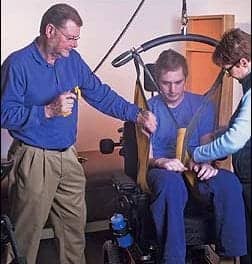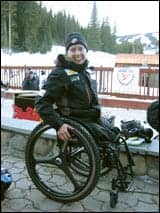The combination of a person’s age and the results of four neurological tests accurately predicts the chances of that person walking again after a serious spinal cord injury, according to an article in the upcoming issue of The Lancet.
The pan-European study evaluated 1,442 patients with spinal cord injuries at 19 centers.
A combination of age (being under 65 versus over 65 years old), and tests assessing the motor scores of the quad muscles, calf muscles, and sensation of skin at the inner side of the knee and outer side of the ankle showed excellent discrimination in distinguishing independent walkers from dependent walkers and nonwalkers, according to the researchers, who found that the accurate (>95%) prediction of walking outcomes was confirmed in a second series of patients.
"We have developed a simple clinical prediction rule derived from data from a large prospective European database that can be used by physicians to counsel patients with traumatic spinal cord injury and their families during the initial phase after injury," the authors concluded. "On the basis of age and four clinical neurological parameters, a patient’s long-term probability of walking independently after injury can be calculated more accurately than it can with [contemporary neurological] grading systems."
[Source: Eureka Alert on behalf of The Lancet]




